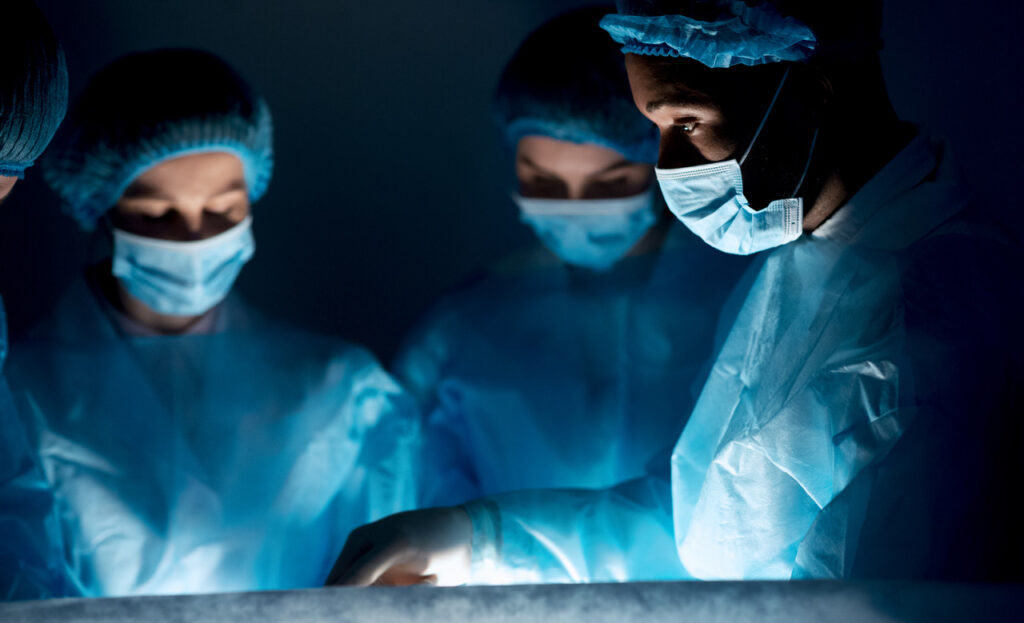In honor of this month’s National Time Out Day (June 10), we’re taking a closer look at this simple but invaluable surgical safety procedure. Introduced by the Joint Commission in 2003, this shared pause by the medical team prior to surgery is part of the Universal Protocol for Preventing Wrong Site, Wrong Procedure, and Wrong Person Surgery.
The Universal Protocol
The Universal Protocol protocol was created in response to a pervasive problem of wrong site, wrong patient surgeries that continue to be an issue today. The Joint Commission has identified several key factors that may explain the high number of these surgical mistakes. Contributing factors often include poor communication, noncompliance with procedures, and a lack of leadership.
The time-out is a crucial step to preventing wrong-site surgeries, and a necessary step to comply with the Universal Protocol. The Joint Commission’s Universal Protocol consists of three key steps:
- Conduct a pre-procedure verification process
- Mark the procedure site
- Perform a time-out
While the time-out was introduced as a checkpoint to confirm the correct patient, procedure and site, it has become a cornerstone of a medical facility’s safety culture, and can significantly enhance surgical outcomes.

Benefits of a Time-Out
The time-out is the first step in the World Health Organization’s Surgical Safety Checklist. This checklist takes under two minutes to complete and has been shown to reduce surgical complications and mortality by over 30 percent. Beyond verifying site, procedure and patient, the time-out is an opportunity for the medical team to connect and build rapport.
According to Dr. Carlos A. Pellegrini, former chair of the department of surgery at The University of Washington Medical Center, Seattle, “A time-out breaks the ice at the beginning of the day with respectful discussion of the steps of the operation with the patient and team members, including potential challenges and a plan B if one is needed.” Dr. Pellegrini continues, “This initial time-out is an opportunity for other members of the team to share their thoughts, which seemed to set up the group for a good day every time.”
The time-out is also an ideal time to assess fire risk. In their recommendations to reduce the risk of a surgical fire, The Joint Commission stresses the importance of communication along with a recognition of the elements of the fire triangle — heat, fuel and oxygen — which must all be present to start a fire. Many medical teams use the time-out to score patients for fire risk before surgery. A point is given for each risk factor that’s present, including: procedural site above the xiphoid process, open oxygen source, presence of an ignition source. Safety protocols are followed and risk mitigation solutions are implemented according to the risk score.
How Important is a Time-Out?
While awareness of wrong site, wrong procedure and wrong patient surgeries has improved, the problem persists. Of the 794 sentinel events reported by The Joint Commission in 2020, 68 were wrong-site surgeries. The Joint Commission estimates that less than 2% of all sentinel events are reported, so numbers are likely much higher.
Surgical fires and burns are also on the rise. According to a recent article in Anesthesiology, the journal of the American Society of Anesthesiologists, there are around 650 operating fires annually, which result in at least two to three patient deaths per year. And incidents have increased significantly in recent years.
Establishing a time-out has never been more important to improve patient safety and support successful surgical outcomes. So how, exactly, do you perform a time-out — and what is the Joint Commission looking for in assessing Universal Protocol compliance?
Performing a Time-Out
In the Universal Protocol Guidelines, the Joint Commission offers the following instruction for performing a time-out, and notes that the procedure should not start until all questions or concerns are resolved.
- Conduct a time-out immediately before starting the invasive procedure or making the incision.
- A designated member of the team starts the time-out.
- The time-out is standardized.
- The time-out involves the immediate members of the procedure team: the individual performing the procedure, anesthesia providers, circulating nurse, operating room technician, and other active participants who will be participating in the procedure from the beginning.
- All relevant members of the procedure team actively communicate during the time-out.
- During the time-out, the team members agree, at a minimum, on the following:
-
- correct patient identity
- correct site
- procedure to be done
- Document the completion of the time-out. The organization determines the amount and type of documentation.
When two or more procedures are to be performed on the same patient — and the person performing the procedure changes — the staff must perform another time-out before each procedure.
Tips for a Successful Time-Out
When assessing Universal Protocol compliance, The Joint Commission has identified several common errors and omissions to avoid. Follow these tips to ensure a compliant time-out:
- Ensure that all members of the medical team are ready, and participate.
- Ensure that senior leadership is engaged in the time-out.
- Empower all members of the team to speak up.
- Avoid distractions and rushed time-outs.
Prioritizing staff education and a consistent organizational focus on patient safety are equally important. At Jackson Medical, patient safety is our priority. While our primary focus is on fire safety in the OR, which led us to create the GloShield fiber-optic light cable cover, we understand the importance of a holistic approach to patient safety. Prioritize patient safety and keep this important pause top of mind with the help of a free time-out checklist that you can print and post in the OR — included in Jackson Medical’s new Surgical Fire Safety Toolkit.
